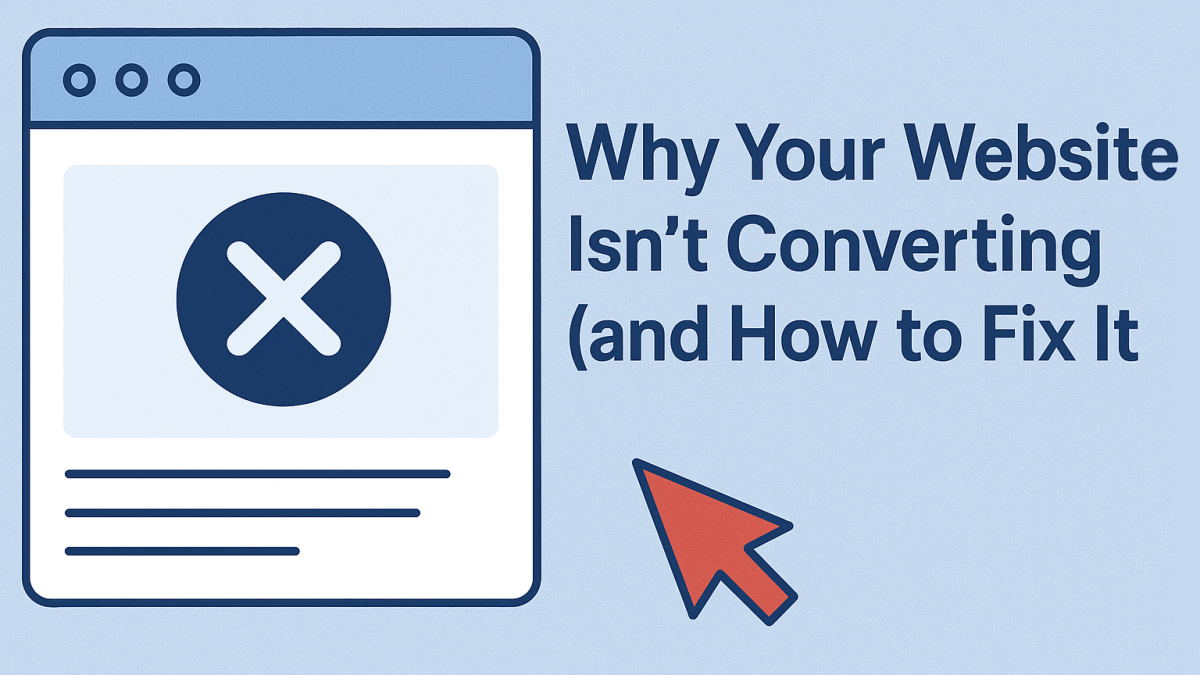
Why Your Website Looks Great but Still Isn’t Converting
Design polish alone doesn’t equal sales. Conversion is a blend of clarity, trust, speed, and psychology. Below are the most common reasons attractive websites fail to convert — and practical steps you can take right now to diagnose the problem.
1. Unclear value proposition
If a visitor can’t tell within 5 seconds what you offer and why it matters, they’ll leave. Beautiful imagery without clear messaging loses ROI.
DIY tip: Write one-line and three-line value propositions and place them at the top of your homepage. Test which one people repeat back when you ask them what the business does.
2. Too many choices
Choice overload paralyzes. Too many services, pricing tiers, or buttons dilute decision-making.
DIY tip: Reduce options on your primary conversion path to two choices (e.g., “Get a Quote” or “Book a Call”). Measure clicks for a week and compare.
3. Weak or missing social proof
Customers seek reassurance. Without clear case studies or reviews, visitors hesitate to act.
DIY tip: Add three short testimonials with specific outcomes (numbers or timeframes) on service pages.
4. Friction in forms and checkout
Long forms, requesting unnecessary information, or unclear error messages kill conversions.
DIY tip: Shorten your form to ask only what you truly need for the next step. Replace open-ended fields with dropdowns where appropriate.
5. Misaligned traffic
Great conversion rates depend on sending the right visitors to the right pages. Paid or social ads sometimes target the wrong intent.
DIY tip: Compare the keywords or ad copy that brought recent visitors to the content on the landing page. If there’s a mismatch, adjust ad creative or landing page messaging.
When to call in help
These DIY steps can reveal obvious problems. For statistically valid A/B testing, funnel redesigns, or systemic UX reworks, a conversion-focused audit that combines analytics, user testing, and design iteration will be far more effective.
Pro tip: Track the top three KPIs for 30 days after each small change — traffic, bounce rate on key pages, and conversion rate — so you know what’s working.
